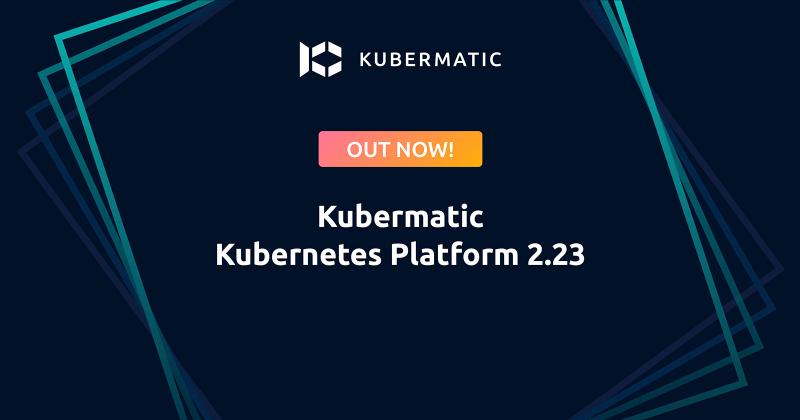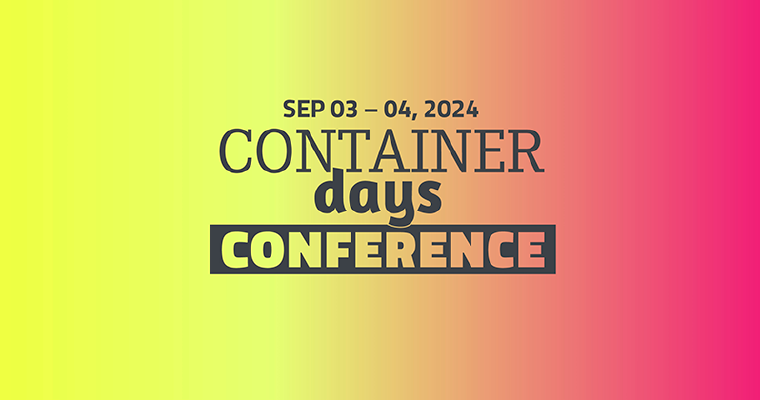Welcome to the world of multi-cloud Kubernetes management excellence! We’ve proud to announce KKP 2.23 which again makes the management of containerized workload in your bare-metal, edge and multi-cloud environment even easier.
Local Kubermatic Kubernetes Platform environment for experiments (Technology Preview)
Using KKP is so easy that you could even teach your grandma how to spin up new Kubernetes clusters and manage them afterwards. However, installation might be tricky, because of the complexity of the underlying infrastructure that enables you to consume 20X less resources for management components of all of your clusters.
If you have already been curious about the capabilities of KKP, but have always been afraid of the high-level entry threshold that the installation takes, then we’ve got you covered from now on! We are introducing the kubermatic-installer local command for spinning up a local KKP environment. It avoids the need of setting up certificates and DNS for your KKP installation, and it also won’t need you to build up multiple Kubernetes clusters as prerequisites for the master and seed components. You can just easily run a KKP installation locally.
Of course, because of its nature it is not meant to be used for production environments, but it’s an awesome way, for example, to check out new KKP features quickly for development purposes.
Note: this feature is still considered as an experimental one, so it’s in a Technology Preview state.
Importing KubeOne clusters into Kubermatic Kubernetes Platform
Our popular open-source product, KubeOne helps you manage the whole Kubernetes cluster lifecycle with its simple CLI tool. Many organizations, having just a few clusters, use KubeOne for making their daily job easier.
Imagine the scenario, when you have a smaller infrastructure. In the beginning you might have started with creating a few clusters with KubeOne, since it provided a handy solution for managing those first few clusters. Later, as the infrastructure was growing, you started having a need for a more complex solution, where your whole fleet can be managed efficiently. So you installed KKP Community Edition, or decided to upgrade to Enterprise Edition, because you might need more advanced solutions, like multiple seeds or resource quotas for your different teams. In this latter scenario, you probably want to still use your KubeOne clusters that have been created earlier.
With our external cluster importing feature, you can easily inhouse your KubeOne clusters into KKP’s fleet management platform. It was already possible to do with clusters running on AWS, Azure and Google Cloud. We extended the list of providers where KubeOne clusters can be pulled in from. The new providers are: DigitalOcean, Hetzner, VSphere, Openstack.
API token authentication for VMware Cloud Director
This latest feature enables cluster administrators on VMware Cloud Director (VCD) providers with enhanced authentication capabilities. With the introduction of API Access Token Authentication, users can now securely authenticate their automation solutions.
This brings convenience and security together by allowing administrators to choose between password-based authentication or API token authentication, based on their preferences and requirements. KKP basically lets you select if you want to provide “User Credentials” or “Application (or API Token) Credentials” during Cluster creation and preset definition as well.
This addition holds value for various use cases. Unlike passwords that often expire and require updates and human interaction, API tokens can offer a persistent and reliable authentication method. Also, in environments that enforce Multi-factor Authentication (MFA, like 2FA) for user logins, you can continue to leverage the full potential of KKP with your VCD provider without any interruptions.
Kubernetes 1.27 arrives
We deliver the newest version of Kubernetes within Kubermatic Kubernetes Platform, so that you can leverage all the new features and enhancements in your user clusters. Check out here what’s new in Kubernetes 1.27: https://kubernetes.io/blog/2023/04/11/kubernetes-v1-27-release/
Kubermatic Kubernetes Platform always keeps the pace
KKP 2.23 delivers a huge amount of updates to components, making sure its users get all improvements delivered from upstream. If you are wondering what components were updated to which version, please take a look at the list of our release notes: https://docs.kubermatic.com/kubermatic/v2.23/release-notes/
It’s time to launch now! 🚀
If you still want to look around about what’s new or what features we have, check our KKP 2.23 documentation here: https://docs.kubermatic.com/kubermatic/v2.23/
When you’re updating from KKP 2.22 to KKP 2.23, our guidance will help you through: https://docs.kubermatic.com/kubermatic/v2.23/installation/upgrading/upgrade-from-2.22-to-2.23/
If you are just starting with experimenting KKP for the first time and you don’t have an active installation, you can download the v2.23 installer binaries of our community editions here: https://github.com/kubermatic/kubermatic/releases/tag/v2.23.0
Here you can also find our guide for the whole installation process: https://docs.kubermatic.com/kubermatic/v2.23/installation/
If you don’t want to use it in production, just testing and experimenting, try our brand-new local installation feature: https://docs.kubermatic.com/kubermatic/v2.23/installation/local-kkp-installation
If you are interested in the Enterprise Edition with extended features like multiple seed clusters, resource quotas or edge capabilities, then contact us and let’s talk!




